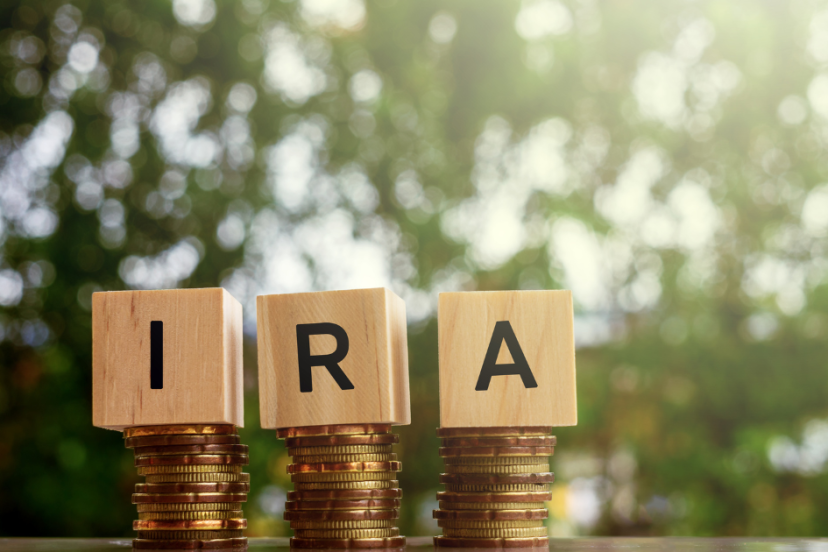Gold IRA Retirement Planning: **Incorporating Gold into a Comprehensive Retirement Plan**
**Introduction**
As an enthusiastic scholar of Gold IRA retirement planning, I believe that preparing for retirement is one of the most crucial financial steps we can take in our lives. In today’s ever-changing economic landscape, it is essential to adopt a comprehensive approach that not only spreads risk amongst our hard-earned savings but also supports our retirement goals. In this article, I will delve into the concept of incorporating gold into an otherwise diverse retirement plan, specifically focusing on Gold IRA accounts, which offer unique attributes to help support our financial goals.
**Understanding Gold IRA Retirement Planning**
*Attributes of Gold IRA Accounts*
A Gold IRA, also known as a Precious Metals IRA, is a self-directed individual retirement account that allows investors to include physical precious metals, such as gold, silver, platinum, or palladium, in their portfolio. The primary reason investors incorporate Gold IRAs is because of its ability to add diversification to a retirement plan, going beyond traditional investments like stocks and bonds.
*Diversification and Risk Mitigation*
Diversification is a key strategy to mitigate risks in any investment portfolio. Investors have included gold in their retirement plans because it traditionally has helped spread risk across more asset classes, which can reduce vulnerability to market fluctuations and economic downturns. Gold has historically shown a negative correlation to traditional assets, acting as a hedge during times of economic turbulence.
*Tax Benefits of Gold IRAs*
Gold IRAs offer potential tax advantages, depending on the type of account you choose. Traditional Gold IRAs may offer tax-deferred growth, allowing your investments to grow without being taxed until withdrawal during retirement. Roth Gold IRAs, on the other hand, can provide tax-free withdrawals if certain conditions are met, offering a tax-efficient way to preserve wealth. Consult with a tax advisor to learn more about the potential tax benefits of Gold IRAs.
**Assessing Your Retirement Goals**
*Determining Your Retirement Needs*
Before incorporating gold as part of your retirement plan, it’s essential to assess your retirement goals and financial requirements. Consider factors like your desired retirement age, estimated expenses, and lifestyle expectations. Having a clear vision of your retirement needs will guide you in making informed decisions about gold allocation. A Gold IRA may not be the right asset class for you at this time, if ever.
*Evaluating Your Risk Tolerance*
Understanding your risk tolerance is crucial when planning for retirement. While gold has traditionally provided a level of stability to retirement portfolios, it is essential to strike the right balance between risk and reward. Some investors may be more risk-averse, while others may be willing to take on higher risks for potential higher returns. Evaluating your risk tolerance will help tailor your gold investment strategy accordingly, should you choose to invest in a Gold IRA.
**Why Some Investors Have Made Gold Part of Their Retirement Plans**
*Gold – An Organic Store of Value*
Gold has served as a store of value for centuries, generally maintaining its purchasing power over time. Investors have included gold in their retirement plans because it can act as a hedge against currency devaluation and economic uncertainties, adding a buffer to wealth for the long term.
*Hedge against Inflation*
Inflation erodes the purchasing power of money, and so during times of inflation wise investors have invested in gold to help insulate their retirement savings from its effects. Gold has historically been an effective hedge against inflation, as its value tends to stay steady during inflationary periods, providing a valuable layer for your retirement nest egg.
*Insulation during Economic Uncertainty*
Economic downturns and geopolitical uncertainties can have a significant impact on financial markets. Gold’s intrinsic value and global recognition have made it a traditionally steady asset to keep during times of economic turmoil, buffering your retirement portfolio when other asset classes may be more volatile.
**Allocating Gold in Your Portfolio**
*How Much Gold Should You Own?*
The ideal gold allocation in your retirement portfolio depends on several factors, including your risk tolerance, investment goals, and current financial situation. Always speak to a financial advisor before investing in gold so you can determine whether it makes sense for you and, if so, how much to invest. As a general rule, however, experts and other experienced investors recommend allocating between 5% to 15% of your portfolio to precious metals like gold. This allocation can provide diversification benefits without overexposing your retirement savings to one asset class.
*Choosing the Right Type of Gold Investments*
Gold can be owned in various forms, including physical bullion, gold ETFs, or gold mining stocks. Each type of investment carries its own set of advantages and risks. Physical gold offers direct ownership of tangible assets, while gold ETFs provide liquidity and ease of trading. Evaluating the pros and cons of each option will help you select the most suitable form of gold investment for your retirement plan.
**Setting Up a Gold IRA Account**
*Finding a Reputable Custodian*
Setting up a Gold IRA requires choosing a reputable custodian who specializes in handling precious metals for retirement accounts. Look for custodians with a track record of excellent service, transparent fee structures, and secure storage facilities. Research multiple custodians and compare their offerings before making a decision.
*Rolling Over or Transferring Funds*
If you have an existing retirement account, you can transfer or roll over a portion of your funds into a Gold IRA. A direct rollover from a qualified account ensures that you avoid penalties and taxes. Seek professional guidance to ensure a smooth transfer of funds while adhering to IRS regulations.
*Compliance and Regulations*
Adhering to IRS regulations and compliance is essential when managing a Gold IRA. Certain types of gold coins and bullion are approved for inclusion in IRAs, while others are not. Make sure to understand the IRS guidelines and work with your custodian to ensure your Gold IRA meets all legal requirements.
**Monitoring and Re-balancing Your Gold IRA**
*Regular Portfolio Review*
Retirement planning is an ongoing process that requires regular monitoring and adjustments. Schedule periodic reviews of your Gold IRA with your advisor along with your overall retirement portfolio. Evaluate the performance of your gold investments and re-balance if necessary to maintain your desired asset allocation.
*Adjusting Your Gold Allocation*
As you approach retirement, consider adjusting your gold allocation based on changes in your financial goals, risk tolerance, and market conditions. A professional financial advisor can provide valuable insights and assist you in optimizing your retirement plan.
**Potential Risks and Challenges**
*Market Volatility and Price Fluctuations*
Like any investment, gold prices can experience volatility and fluctuations. While gold’s long-term performance has been relatively stable, short-term price movements can impact your portfolio. Understanding and being prepared for such fluctuations is crucial to avoid making hasty investment decisions based on short-term market movements.
*Liquidity Issues*
Physical gold may not be as liquid as other assets like stocks or bonds. Selling physical gold may take time and involve additional costs. Consider the liquidity aspects when determining the appropriate amount of gold to include in your retirement plan.
**Conclusion**
Incorporating gold into a comprehensive retirement plan has been considered a prudent strategy for diversifying and supporting financial goals. By further diversifying your portfolio with precious metals like gold alongside other traditional asset classes, you can manage risks, hedge against inflation, and navigate economic uncertainties. However, it’s essential to align your gold allocation with your specific retirement goals and risk tolerance. A well-balanced and professionally managed Gold IRA can provide you with an additional asset class to support your retirement journey.
**FAQs**
*1. What is a Gold IRA and how does it work?*
A Gold IRA is a self-directed individual retirement account that allows you to include physical precious metals like gold. It works similarly to a traditional IRA, but instead of holding only stocks and bonds, it also holds tangible gold assets as part of your retirement portfolio.
*2. Can I hold physical gold in my Gold IRA?*
Yes, you can hold physical gold, such as gold bars or coins, in your Gold IRA. It’s one of the primary attributes of a Gold IRA, as it allows you to own tangible assets that traditionally act as a hedge against economic uncertainties.
*3. Are there any tax implications for owning a Gold IRA?*
The tax implications of a Gold IRA depend on the type of account you choose. Traditional Gold IRAs offer tax-deferred growth, while Roth Gold IRAs provide tax-free withdrawals under certain conditions. Consult a tax professional to understand the specific tax benefits applicable to your situation.
*4. Is it possible to transfer an existing retirement account into a Gold IRA?*
Yes, you can transfer or roll over a portion of funds from an existing retirement account, such as a 401(k) or traditional IRA, into a Gold IRA. A direct rollover ensures a smooth transfer without incurring penalties or taxes.
*5. How can I choose a reliable custodian for my Gold IRA?*
Choosing a reputable custodian is crucial for the success of your Gold IRA. Research multiple custodians, read reviews, and compare their fee structures and services. Look for a custodian with a solid track record in handling precious metals for retirement accounts. Seek recommendations from financial advisors or trusted individuals to make an informed decision.







